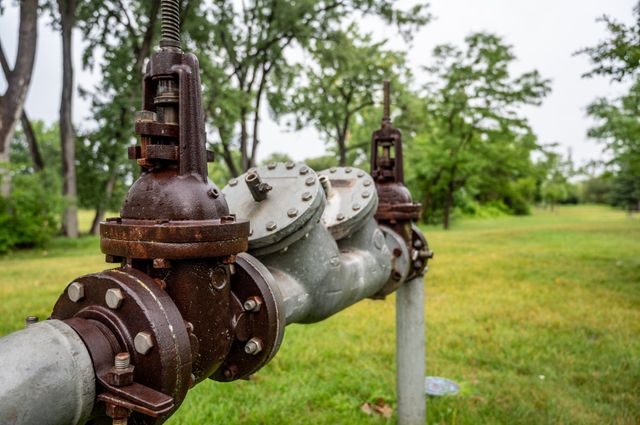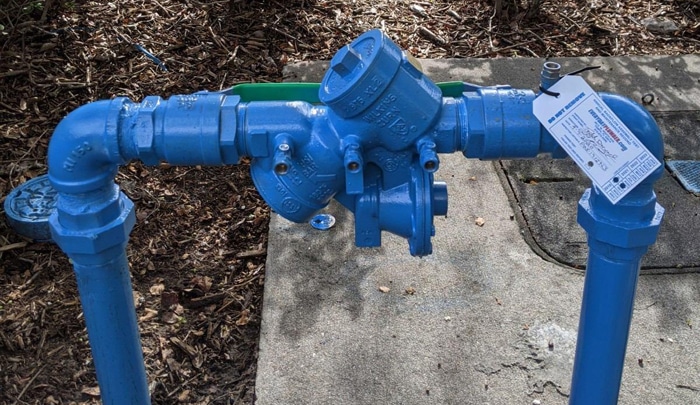We have stumbled upon this article about Is backflow testing necessary? down the page on the net and concluded it made good sense to write about it with you on my blog.

Yes, you need to backflow test your home's water system to guarantee that the water is devoid of contaminants and also hazardous levels of chemicals. You should not try to execute heartburn testing on your own due to the fact that of the tools called for and space for mistake. We recommend that you call a specialist plumber every couple of years to evaluate your water.
Backflow Can Influence Both You and Your City
Lots of cities develop heartburn standards because dangerous backflow can impact the public water in addition to a solitary structure. Modern cities have backflow gadgets in area that shield the water supply that comes from the majority of homes and commercial properties. The genuine threat originates from irrigation systems, which can harm the supply of water with harmful fertilizers, manure, and also other chemicals.
What Creates Backflow?
A normal cause of heartburn is a loss of water pressure that causes the water to siphon back into the water supply. After some time, there is a loss in water pressure and also the hose starts to suck the water back right into the water supply. As you can envision, there are now chemicals from the paint that are getting in the water supply, possibly presenting a risk.
Heartburn Testing is Needed by Regulation in Specific Cities
Depending on where you live, you may actually be needed by law to backflow examination your law. Iowa City maintains a document of all residential properties served by the city's water supply.
You Can Stop Heartburn
The main purpose of a backflow tool is to protect against water from moving backwards into your water supply. Plumbing professionals set up the gadget on the pipes in your residence to make sure that the water just flows in the right instructions.
What is Heartburn?
In short, heartburn is when water moves upwards-- the opposite instructions in the plumbing system. This is additionally referred to as "backpressure." When the water relocates this direction, it can mix with damaging contaminants and posture a risk.
Call a Plumber to Test for Backflow Prior To It is Far too late
A plumbing business can rapidly evaluate your home's water to identify if there are any type of harmful chemical degrees. As well as if you do uncover that your water has high levels of contaminants, a plumber can conveniently mount a backflow prevention tool.
Yes, you need to backflow test your residence's water supply to ensure that the water is free of contaminants and also dangerous degrees of chemicals. Many cities develop heartburn standards because unsafe heartburn can impact the public water supply in addition to a solitary building. A common reason of backflow is a loss of water pressure that causes the water to siphon back right into the water supply. After some time, there is a loss in water stress and also the hose begins to draw the water back into the water supply. The primary function of a heartburn gadget is to avoid water from flowing backward into your water supply.
WHY DOES BACKFLOW TESTING NEED TO BE DONE EVERY YEAR
What Is Backflow?
Toxic gas backing up into a building is one example of potential backflow issues, but backflow can occur in many other ways.
Backflow is generally referred to as the reversal of a liquid or gas in a plumbing system.
Most issues for the public occur with backflow resulting in contaminated drinking water. If you look up backflow issues online you’ll probably find references to “potable” water. That means drinking water.
There have been backflow issues in the past with drinking water. Chemicals, sewage and other contaminants have found their way into drinking water causing health issues for those that count on the fresh water.
What Causes Backflow?
In a residence or commercial building water generally flows one way. This normal flow is usually driven by consistent pressure in the water and waste system.
Anything that changes the normal pressure in the system can lead to backflow.
Fire hydrant use or malfunction can reverse the normal pressure in the system on a city line, but backflow can occur in a number of different ways.
Sometimes backpressure might be caused by someone using a garden hose and submerging the end of the hose in a pool of liquid. If pressure is lost the flow could reverse and contaminants could be released into the drinking water.
Anytime there is a connection between contaminants and the drinking water there is potential for a backflow issue. Sometimes these connections are not immediately obvious like the garden hose connecting to a building’s drinking water supply.
Backflow Regulations
The Environmental Protection Agency (EPA) provides guidelines and regulations for state and local governments regarding backflow. State and local governments also have their own guidelines and regulations for backflow prevention.
Arizona has its own backflow regulations.
Due to issues with backflow in the past, regulations require backflow preventer devices to be used in nearly all residential and commercial buildings.
A backflow preventer is a device that prevents backflow as cross-connection points where potential backflow issues may occur.
While backflow is not a common occurrence, preventers are in place to make sure there is no contamination should something malfunction or go wrong with a building’s water supply.

Do you really like reading about Backflow Prevention? Try to leave a remark further down. We would be interested to find out your views about this blog post. We hope that you come back again in the future. I beg you take the opportunity to promote this page if you appreciated it. Many thanks for your time. Come back soon.
We're alert, ring!